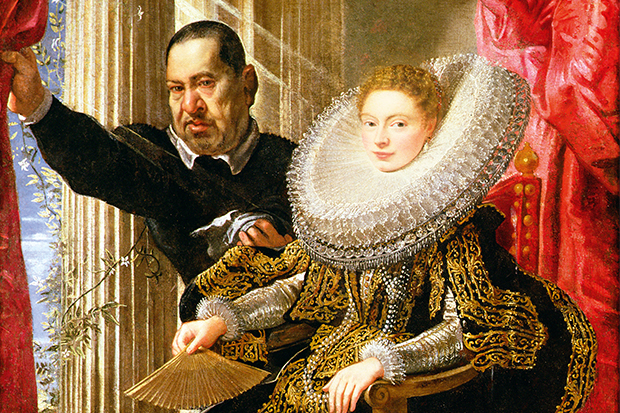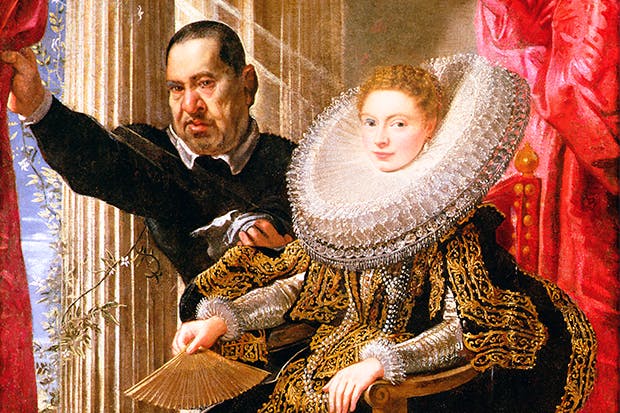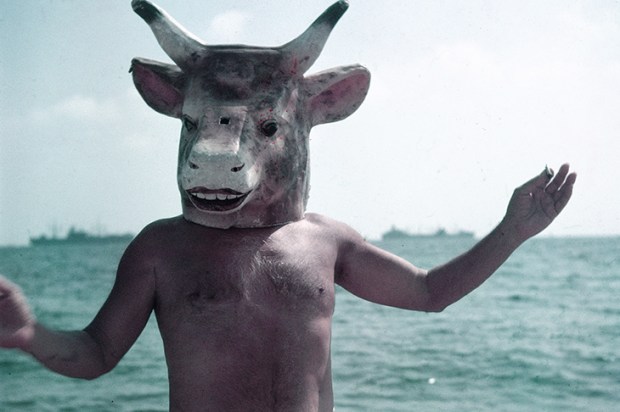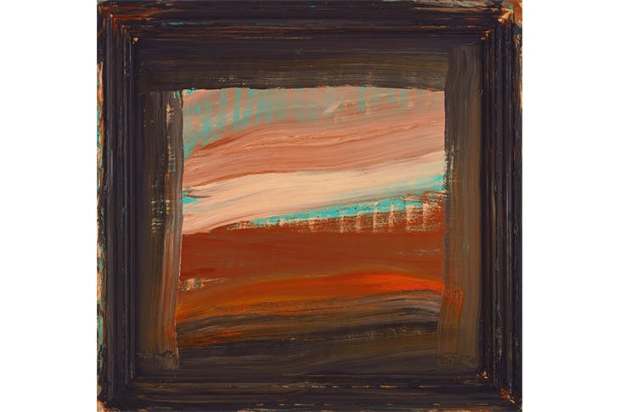Last Sunday, I went to see two of the greatest paintings in Britain — at least in the estimation of our Georgian ancestors. When they first arrived here, in 1790, they were accompanied by a special naval escort. After Turner saw one of them, he said the experience made him both ‘pleased and unhappy’, because it seemed beyond his powers to imitate.
These are the so-called ‘Altieri’ Claudes, by any reckoning among the most spectacular pictures produced in late 17th-century Rome. Today they hang at Anglesey Abbey, Cambridgeshire, where — at least on the afternoon I was there — few others had found their way to see them. Not that the place lacked visitors. The car park was packed; the park and gardens full of family parties sitting in deck chairs enjoying the unusual experience of hot weather in an English summer.
There were plenty of people in the rest of the house, diligently examining the bedrooms, bathrooms and possessions of the late Lord Fairhaven, who left it all to the National Trust. But not many penetrated to the room where the Claudes hang, down a staircase near the end of the circuit, although a mother came in while I was there together with a toddler who took an intense interest in both ‘The Father of Psyche sacrificing at the Temple of Apollo’ (1662–63) and ‘The Landing of Aeneas at Latium’ (1675). We could both examine the fabulously delicate treatment of woodland shade, distant hills and light-filled air in tranquillity, far from the madding and maddening tourists and tour groups you would be surrounded by in, say, the Louvre. It was a good example of an old-fashioned experience: going to the country to look at art.
In the days before the world was filled with museums — as it is nowadays — this was routine. In 1811, when John Constable went to Salisbury to visit his friends the Fishers — the bishop of the diocese and his nephew — naturally, he and his hosts made an excursion to Longford Castle to see the Earl of Radnor’s pictures. There they would have seen quite a few masterpieces now on view at the National Gallery, among them Holbein’s ‘Ambassadors’ and Poussin’s ‘Adoration of the Golden Calf’.
Nor did this exhaust the supply of old masters in the vicinity. If Constable had set off from Salisbury in a different direction, he would soon have come to Wilton House, with its array of Van Dycks in an interior by (or at least in the style of) Inigo Jones: the perfect combination of Caroline pictures and architecture. Not far to the south and west near Blandford in Dorset is Kingston Lacy, where a wonderful Velázquez portrait, of Camillo Massimo, has hung since at least 1821. That collection — one of my favourites — also boasts two show-stopping portraits by Rubens (one pictured right) and Sebastiano del Piombo’s ‘Judgement of Solomon’, one of the most intriguing Venetian pictures in existence, left unfinished at the moment when Sebastiano left for Rome, and switched from being an associate of Giorgione to being an acolyte of Michelangelo.
Wiltshire and Dorset, admittedly, are well off for great art. There aren’t many parts of lowland Britain, however, where you are far from a masterpiece. Even to list the most magnificent ensembles — the 24 Canalettos at Woburn Abbey in Bedfordshire, the 19 Turners at Petworth, Sussex — gives an idea of the riches spread over the counties of Britain. In aggregate, naturally, there’s a great deal of what Georgian aristocrats most coveted — warehouses full of Gainsborough and Reynolds, whole galleries of Canaletto, masses of Claude (eight of those at Holkham on the Norfolk coast alone). Scattered here and there, however, there’s a bit of just about everything: two exquisite Watteaus on the Isle of Arran, for example.
Once upon a time an extraordinary number of old master paintings were in British country houses, some bought on the grand tour — like the two organ doors and an altarpiece by Veronese at Burghley House, Lincolnshire, which took the 9th Earl of Exeter’s fancy as he passed through Venice in 1769. Many more were snapped up at auctions, especially after the French Revolution.
For over a century now, though, the flow has been in the opposite direction. The stately homes of England have been emptying out. Innumerable pictures that used to hang on their walls are now in the major museums of the world. It’s a long time since Velázquez’s ‘Rokeby Venus’ was to be seen at Rokeby Park; it’s been in the National Gallery since 1906. One of the pictures Constable might well have seen while going round Longford Castle in 1811 was Velázquez’s portrait of Juan de Pareja, since it had probably been bought by the 2nd Earl a few months before, a snip even in Regency era money at £151. Since 1970 it’s been — on a subjective but reasonable assessment — the most outstanding painting in the Metropolitan Museum, New York (its nearest rival in that collection, Rembrandt’s ‘Aristotle with a Bust of Homer’, was at one time in Hertfordshire).
And yet, no matter how much art disappears from the walls of British castles and mansions, plenty remains: probably enough, if it were all gathered together, to make up quite a respectable alternative National Gallery. Museums and exhibitions are invaluable institutions, but especially in summer it’s worth remembering that we can still do as Constable did, and look at paintings in the country.
The post House style appeared first on The Spectator.
Got something to add? Join the discussion and comment below.
Get 10 issues for just $10
Subscribe to The Spectator Australia today for the next 10 magazine issues, plus full online access, for just $10.
You might disagree with half of it, but you’ll enjoy reading all of it. Try your first month for free, then just $2 a week for the remainder of your first year.














Comments
Don't miss out
Join the conversation with other Spectator Australia readers. Subscribe to leave a comment.
SUBSCRIBEAlready a subscriber? Log in